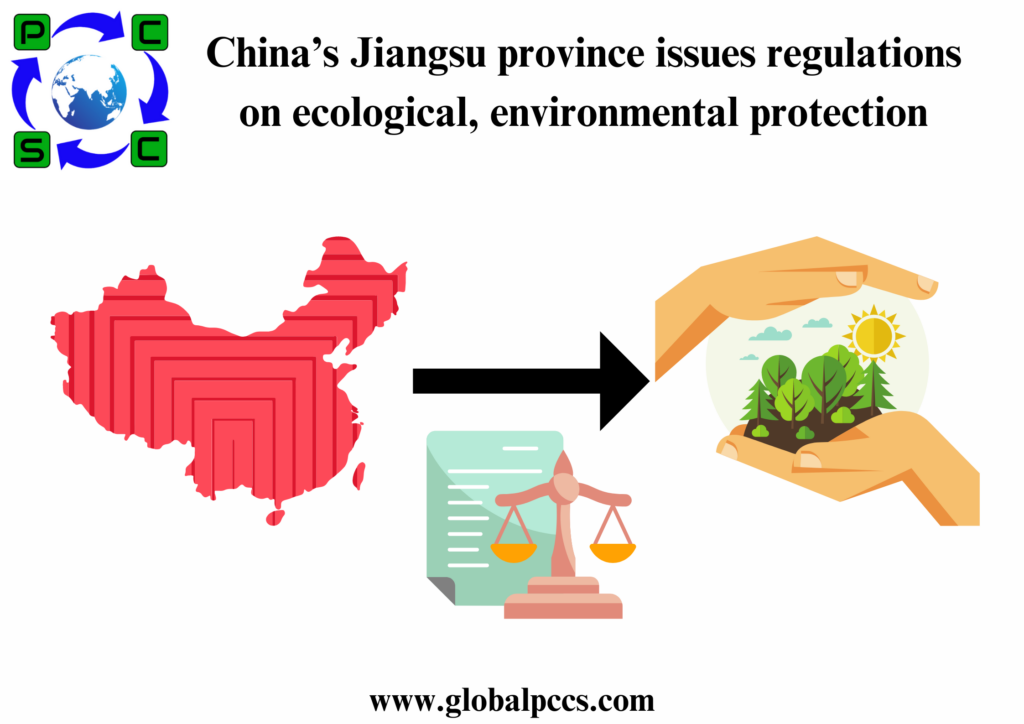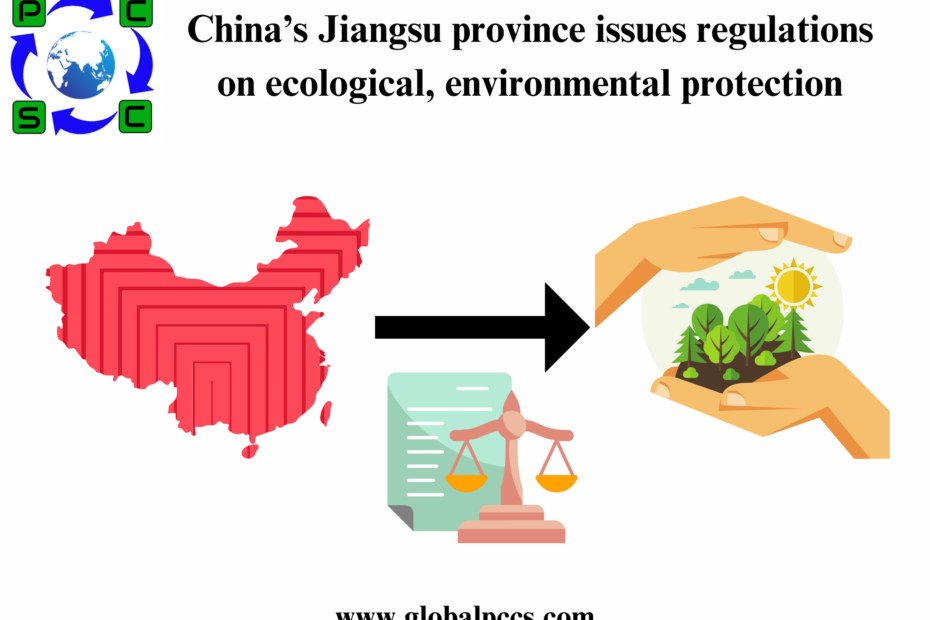 On March 27, 2024, the Provincial People’s Congress of Jiangsu province, China, published local regulations on ecological and environmental protection, which will come into effect June 5, 2024. These are overarching legislation for environmental protection in the province. The regulations include stricter rules on green and low-carbon development and false reporting in environmental impact assessment and monitoring.
On March 27, 2024, the Provincial People’s Congress of Jiangsu province, China, published local regulations on ecological and environmental protection, which will come into effect June 5, 2024. These are overarching legislation for environmental protection in the province. The regulations include stricter rules on green and low-carbon development and false reporting in environmental impact assessment and monitoring.
The regulations consist of 84 articles in the following seven chapters: General Provisions, Oversight, Ecosystem Protection and Restoration, Environmental Pollution Control, Green and Low-carbon Development, Legal Responsibility, and Supplementary Provisions.
Jiangsu province issued its first regulations on environmental protection in 1993, but over time, these became inconsistent with newly-issued and revised laws of the central government, and were abolished in 2018.Nevertheless, the province has continued making and revising regulations on air, water, soil, waste and noise pollution and automobiles since then, and now in 2024 issued the new regulations on ecological and environmental protection as legislation overarching different environmental areas.
The following sections show the important points of the latest regulations for the environmental management of businesses.
Pollution control
- Companies can discharge pollutants in accordance with the conditions written on their pollutant discharge permits.
- The province will implement paid pollutant allowances, a pollution market and pollutant discharge caps. If new, remodeled or extended facilities run out of key pollutant discharge allowances, they can obtain additional allowances from the pollution market or the allowance reserve for pollutant discharge caps.
- The province will increase water pollution control measures, and reduce the total discharge amount of major water pollutants, such as total phosphorus, in the catchment areas of important water bodies, including Lake Tai, Yangtze River and Huai River.
- In industrial coating, packaging and printing, wood processing, textile, and other industries, companies must use coatings, inks, adhesives, cleaning agents, etc. containing only a small amount of VOCs, and keep a record of the used amount, discarded amount, destinations and VOC content of raw materials used in production for at least three years.
- To reduce the discharge of new pollutants, the province will develop systems and standards for the investigation, monitoring, assessment and control of new pollutants, and conduct mandatory clean production audits of companies using toxic or hazardous substances or discharging them in production activities.
Green and low-carbon development
The Department of Ecology and Environment of the province will publish a list of key CO2 emitters, and allocate carbon emission allowances to them. These emitters must restrict CO2 emissions, and report on their carbon emissions to the department.








 Authorised IMDS & CDX Training & Consulting partner for
Authorised IMDS & CDX Training & Consulting partner for






